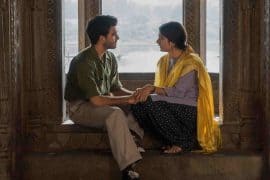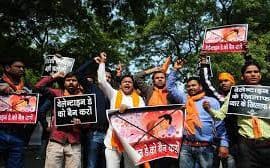India is known as a vibrant land, with its different cultures and varied ethnicities. Standing true to this is our country’s most colourful festival, Holi. With this eventful day just around the corner, be prepared to brandish that lethal pichkari at anyone who dares to attack you with a water balloon grenade.
Most people associate Holi with Holika Dahan, or the defeat of the demoness Holika. According to Hindu mythology, she was trying to kill Prahlad, the son of her brother, who was the almost indestructible king Hiranyakashyipu. An effigy of Holika is burnt on the eve of Holi as symbol of the triumph of good over evil.
Owing to the diversity of India, even festivals are not spared when it comes to celebrating them in unique ways. Initially restricted to the northern belt, over the years Holi has reached all parts of the country. As the festival traverses from one region to another, there are perceivable changes in the way it is played. In some cases, the name changes too. One such example is Rangpanchami, the name given to Holi in Maharashtra. As indicated by the name, people wait for the fifth day to apply colour on each other. It started out as an extremely popular festival amongst the fisher folk before spreading to the masses. Known as Shimgo in Goa, Holi indicates the arrival of spring. Playing with bright colours and water is often followed by a heavy meal consisting of a spicy chicken or mutton curry called Shagoti and sweets.
One of the most enthusiastic Holi celebrations can be seen in the states of Uttar Pradesh and Bihar. In some areas, men and women stand on two different sides, representing Krishna and Radha, and if a man is captured, he is made to dress like a woman and dance for everyone. In Haryana, Holi is usually a battle of the sexes. The Bhabhi or the brother’s wife gets to bully the Devar, or her husband’s younger brother. Things change slightly in Punjab, where it is given the name Hola Mohalla. This is an annual air, a practice that began during the time of Guru Gobind Singh, the tenth sikh guru. Holi is celebrated over three days here, with activities such as Bareback horse riding, standing on two speeding horses, tent pegging, etc are seen as acts of valiance.
Basant Utsav refers to Holi in West Bengal. Here, holi is played with a lot more dignity, and is a symbol of the onset of spring. This is due to its inception by Rabindranath Tagore at Shantiniketan. Another version of Holi played in this region is Dol Purnima or the ‘Swing Festival’. Children dress up in Saffron and wear garlands while they dance to the beats of drums. Idols of Krishna and Radha are carried in a palanquin around the city, making for a colourful and joyous procession.
Holi, with Tamil Nadu celebrating a version called Kaman Pandigai, is the perfect indication of how not all South Indian states are spared from its spell. This festival is named after the lord Kaamadeva, or the god of love. The legend states that Shiva burnt Kaamadeva to ashes when he tried to shoot an arrow of love at him while he was mourning the death of his first wife Sati. Kaman Pandigai celebrates the rebirth of Kaama when Shiva realises his mistake and brings him back to life.
Whichever part of India you might live in, it is hard to escape the clutches of this highly energetic and addictive festival. If a bunch of cheeky kids attack you on your way to college, rendering you completely wet, don’t lose your cool. Bura na mano, Holi hai.
Picture Credits: holifestival.ind.in
Vishakha Darbha





Comments are closed.